Normally, nipple confusion is the one thing moms want to avoid when trying to keep their baby fed and happy, but what if the problem is reversed?
When your baby outright refuses to take milk from anything other than the mother’s breast? That’s when you start wondering how to get a breastfed baby to take a bottle.
While not necessarily the biggest hurdle that you’ll face during motherhood, it’s definitely one that can rear its ugly head and probably has if you’re reading this article, so let’s do something about it, shall we?
As far as the baby bottle is concerned, there are many ways you can try to get your little one to accept the silicone nipple over yours and get him into bottle feeding alongside breastfeeding.
Getting him used to the baby bottle is important in case you’re unable to feed him at some point for whatever reason.
Maybe you aren’t producing enough milk for the day because you’re stressed out or because of something else.
Or maybe you’re finally returning to work and you’re simply not around, so your partner or your nanny has to use the bottle – something that’s infinitely harder to attempt if your little one is not used to it.
11 Tips To Try Getting Your Breastfed Baby To Take To A Baby Bottle
1. Knowing when to start in the first place

A baby has to get used to his mother’s breast first before the bottle is even introduced.
You still want to avoid nipple confusion as that is a bigger problem to overcome than your baby not taking milk from the baby bottle.
Wait for at least 3-5 weeks before even thinking of giving him a bottle, as that is about the estimated time of when you’ll want to start him on it.
2. Finding the right time to introduce the bottle

Usually, the best period to introduce a bottle is right after you breastfeed your little one.
He’ll be sated from it, though arguably a bit peckish still (as all babies are), and then you can attempt to provide him with small bits of milk that he can try suckling from the bottle.
Baby steps.
He’ll hopefully start adapting to it easier than if you just outright introduced it during any other time, since he’ll be a lot calmer and accepting after eating, after all.
One thing I would also suggest is to get a bottle with a slow flow nipple to better mimic the way milk flows from your own nipple.
That way, your little one doesn’t have to adjust to a whole new way of sucking to get the milk out of the silicone baby bottle nipple.
3. Minimize the distractions
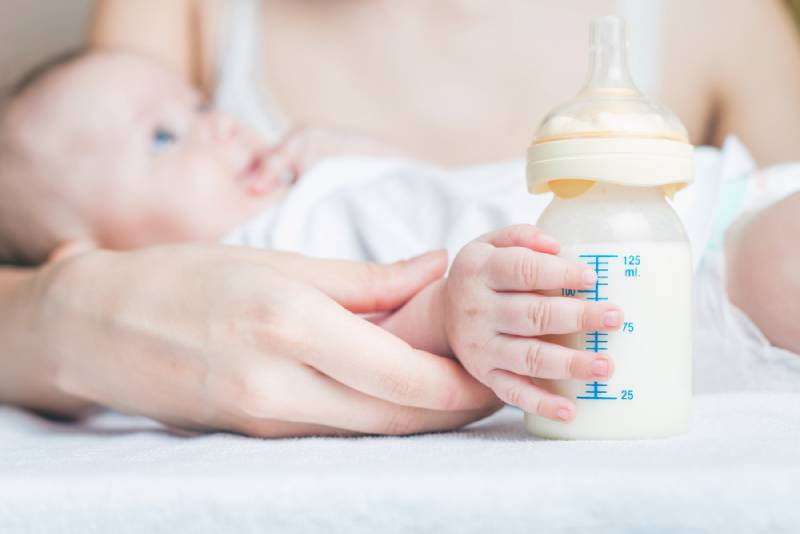
When trying to get your breastfed baby to take a bottle, it’s best to do it in a nice and isolated room, preferably quiet –though you can turn some light, relaxing music on to set the mood if need be and maybe some aromatic oils.
Anything that you feel might help.
That way, both you and the baby can calm down and there will be no loud TVs, guests, or otherwise to bother you or pull your little one’s thoughts away from trying to feed – be it bottle or breast.
4. Don’t be there for it
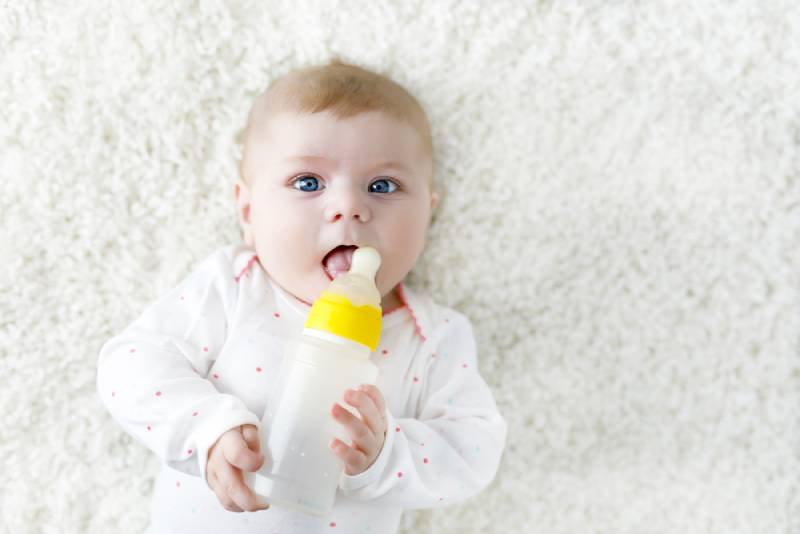
They remember the scent of their mother and latch onto it, especially the breast.
So, if you’re around when the bottle is trying to be introduced, there’s a higher chance of it being refused simply because his usual best is right there, why would he choose something inferior?
Let your partner do it while you’re off in the other room.
Your partner will still have the calming presence that you do, only with an alternative to your breast in hand, and your baby boy or baby girl can take to it better than if you were in the picture.
I know, I know, not being there for him during all of his moments is a bit of a disappointment, but don’t let that get you down – it’s what’s best for your child and it might be a step that you won’t have to undertake, hopefully.
You’ll still get plenty of time with your little one before your baby starts growing more mature outside of this.
5. Use a whole different position while bottle-feeding

Now, this doesn’t have to be an exact science; you can just shift from cradling him while feeding to a more upright position, or by lying down and him lying atop you to still feel your warmth while feeding in a different way.
Experiment and see what works best. You’ll be surprised at how effective the results from this tend to be.
6. Start the transition with a pacifier
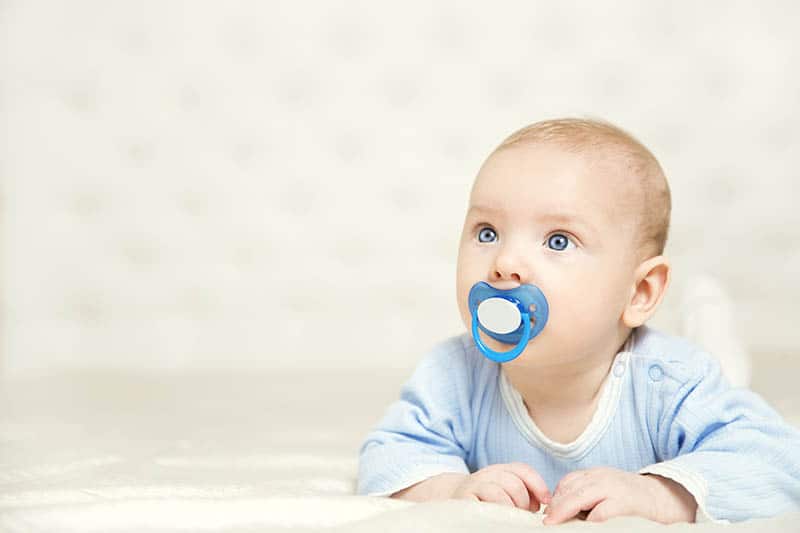
That’s because pacifiers require a lot less effort and they still mimic the mother’s nipple, allowing for easier adjustment to an artificial one.
Plus, they’re completely passive in the sense that they don’t have to be held to stay in the baby’s mouth; he can just suckle on it as he sees fit and spit it out if he doesn’t want it, without making a mess.
What I would suggest though is to get a pacifier that actually has a silicone nipple molded based on the way a mother’s nipple both looks, feels, and functions.
It will make the transition a lot easier and help prevent potential nipple confusion. Plus, the right one will help keep your baby calm and less prone to being fussy.
Not to mention the amazing teething benefits it’ll be able to provide as your little one’s teeth start coming in.
A baby used to a pacifier is less prone to manage his teething pains by gnawing on tables and other unsafe items that might ruin his pearly whites and the way that they come in.
Make sure your little one is at least used to a pacifier before he turns into a year old baby, otherwise you may come into a whole different number of problems.
7. Get a bottle with some colorful designs on it
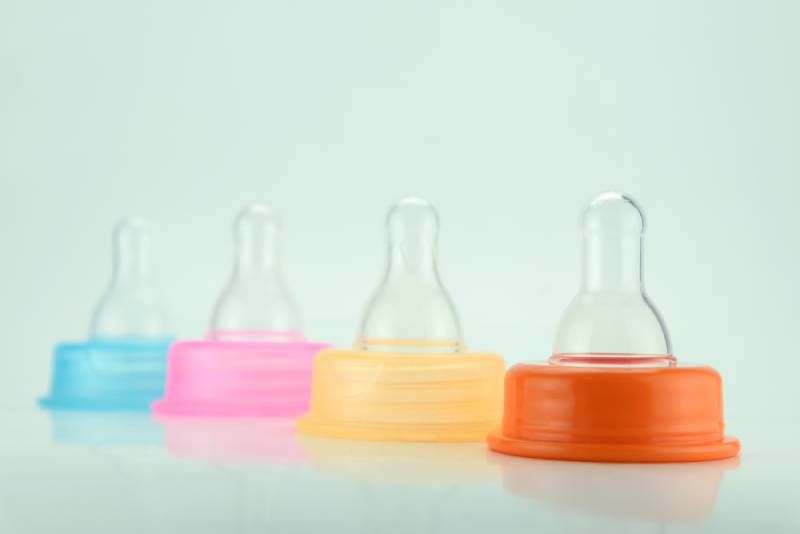
At least that’s what worked for my child, though I didn’t really have that much of a struggle getting him to drink milk at the start, just with the retention periods.
It does help if the baby bottle looks like something you can let the baby play with, as that will keep his focus on it for much longer than the bland, see-through bottles you’d find at a hospital.
The more customized an infant’s experience is, the more he’s going to like it, trust me.
8. Learn to be patient
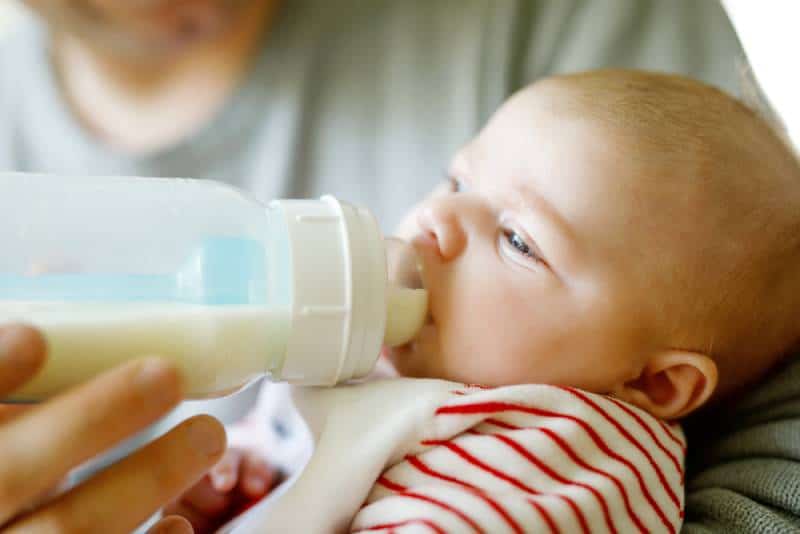
It’s really up to your baby and your own perseverance to estimate just how long it might last.
If you find him refusing the bottle after you try introducing it initially, just set it aside somewhere hidden and wait for a few minutes.
Return him back to the breast for a bit to calm him down again and after a few minutes, just pull the bottle out and try again – maybe in a slightly different manner than the one that ended up frustrating him.
Luckily for us, newborn babies tend to have quite a short attention span and their object permanence still hasn’t set in.
So every time they see the bottle, it’s a whole new object for them to interact with on the side.
This is why I said at the start that bottle refusal isn’t really that big of an issue, but if you force him to move from the real teat to an artificial one way too quickly or forcefully, he might end up staying on that for a while.
Accidentally introducing nipple confusion is in fact a bigger threat than learning how to get a breastfed baby to take a bottle.
9. Try making the bottled breast milk different
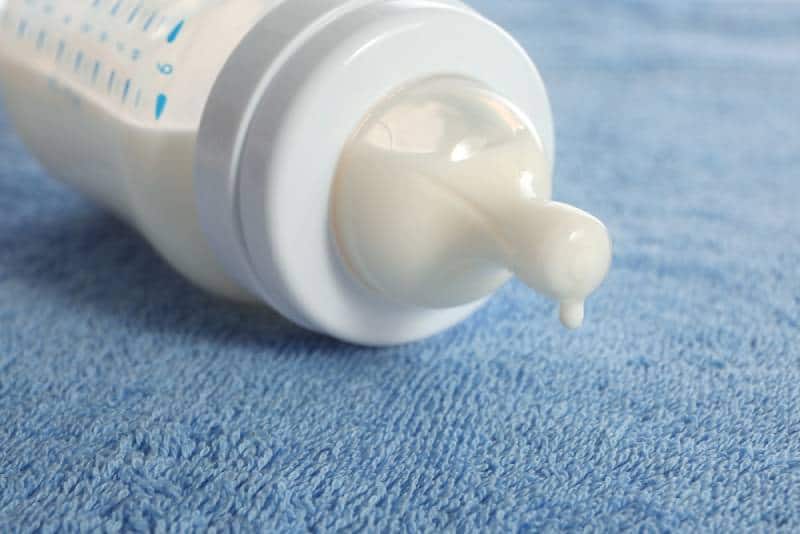
Some babies tend to favor colder or more lukewarm milk than the one that comes out of your breasts.
Providing them with this alternate source of nourishment of different temperatures might be just what gets them to like their bottled milk just as much as they would breast milk, but for wholly different reasons so that there’s no clashing between the two.
So try giving it to them straight out of the fridge or after being thawed under warm water after being stuck in a freezer, and see what works out best.
I would stay away from flavoring it in any way though, and to only stick to temperature differences, as this is the one thing you want to remain untainted.
You can do so when he starts eating more solid foods, but for the initial period, milk is all that he’s going to need and the difference between hot and cold is like two gourmet dish varieties for them.
10. Sometimes the bottle is just wrong
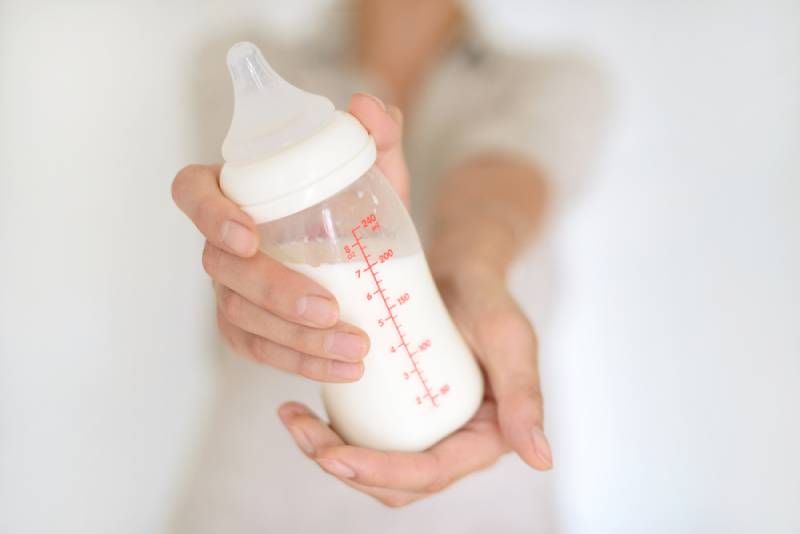
Some babies just tend to prefer their bottle-feeding or breastfeeding experience a certain way. If you can afford it, try experimenting with different baby bottle brands and shapes to see which one will stick. Some bottles are better suited to breastfeeding babies than others!
Maybe it’s just the shape, maybe it’s the way the nipple feels in his mouth, maybe he prefers a faster flow over a slow flow nipple, or maybe using the bottle just doesn’t help him latch on properly and ends up giving him gas.
The only way to find out is to go through the process of elimination while studying why exactly he might hate the bottles you’re trying until you get to the right one.
The best way of going about this is to try going for ones that have a money-back guarantee tied to them to stop your whole budget being spent on six different types of baby bottles.
As important as it might be, having the money to fund other, more important supplies that your baby needs is paramount.
11. When all else fails

If you’re still having problems, try seeking the advice of a lactation consultant or your family pediatrician.
There might be an underlying issue to your baby’s aversion to being bottle-fed.
It could be a mild allergy to silicone that’s making him uncomfortable or he may simply be too fussy to deal with anything but the real deal.
Anything is possible, but if anyone is going to get to the bottom of it, it’s a professional.
12. (For working moms) Make sure to nail it down before your maternity leave expires
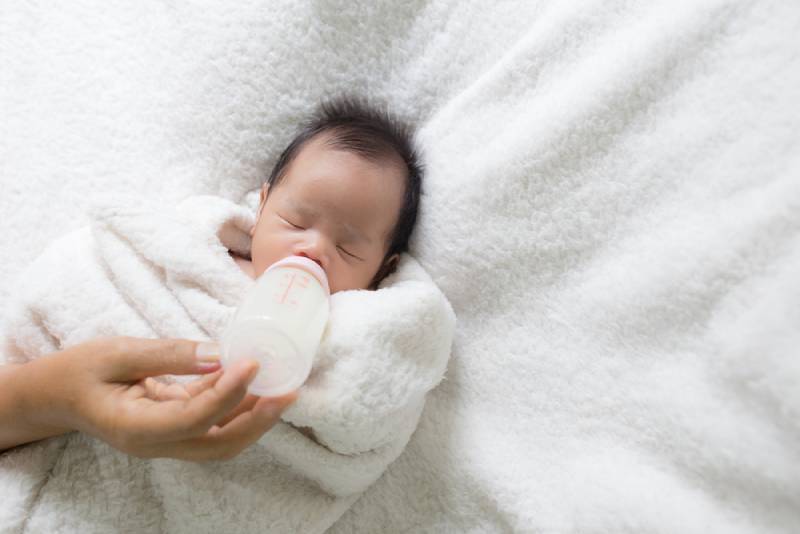
I’ve mentioned it to every mother I come into contact with about how big of a detriment that is and how it should be changed for the benefit of both mom and baby.
But, it is how it is – you can’t be expected to get too much of a “vacation” these days and we have to work to keep the food coming to our tables, after all.
It’s just that babies and their moms get robbed of their most important bonding period – the little one’s first year – and lose out on the potential to further strengthen the already solid bond.
In any case, keeping him bottle trained is going to be helpful to both your partner and the nanny.
The best thing you can do outside of that is to keep the milk supply steady by pumping at work or when at home (at work is the most ideal if allowed to), so that you won’t have to worry about the baby running out of food while you’re away.
Why Your Child Might Be Rejecting The Bottle
While not the biggest issue on its own, it’s nice to know why your baby might not be taking to the bottle as easily.
Some of these were mentioned in the earlier tips, but it’s nice to consolidate them all in one spot so it’s easier to find them.
1. Clinginess

This can become a problem if left untreated, as it might play into his self-esteem later on too, leaving your child too much of a momma’s boy, later stunting his level of independence.
To combat this, you can try swapping from one nipple to another, so you’re not always nursing from the same one but providing some variety.
Interacting with two different nipples in different positions might lead your baby to believe that variety is nice. While you may consider it one and the same thing, to him it’s a whole new experience.
This way it becomes easier to introduce the artificial nipple from the baby bottle and transition to it when the need arrives.
This is why the first step mentioned above is paramount.
You should always let your partner introduce the baby’s first bottle to him so that he can associate another face to the act of bottle feeding, otherwise you would’ve just stuck to breastfeeding.
2. The silicone nipple might feel wrong to them

The first bottle you buy has a high chance of being rejected at first because it might feel too hard or too soft to his mouth – different from the feel of your own nipple in general.
You can solve the hardness issue by running the nipple through some hot water to get it to loosen up a bit, though it’s best to just get them used to it or to try a different bottle brand if your budget allows.
It might not even be the bottle – it could even be an allergy to the product, in which case you’re out of luck with the bottles and may just need to resort to spoon-feeding them the milk or using a dropper if there are no alternatives.
3. They aren’t feeding properly

This is something that will definitely cause problems for you until he learns how to properly latch to the bottle.
This also means that the whole learning process for him may be riddled with a lot of crying and pushing the bottle away from his mouth.
He doesn’t want to struggle when your teat is so easily accessible and doesn’t require nearly as much effort to express milk from.
The way to go about this is to just be patient and steadfast.
It’s important that he sees you think the bottle is the right choice (or well, your partner, since you might also be the cause for denial for the earlier mentioned reasons), and eventually, you’ll manage to get him to take the bottle as his new food source.
In Conclusion
When wondering how to get a breastfed baby to take a bottle, it can take either a few simple steps to get it working or it might end up not succeeding for a very long time.
Honestly, it just varies from one baby to another as each of them has their own unique preferences on how they like to drink their milk.
Baby girls usually make less fuss about it than baby boys for the sheer fact that boys start thinking of practicality a bit earlier, making them somewhat pickier when younger.
In any case, just don’t stress too much over it as there are other alternatives that are sure to work.
I just hope that this article has managed to help rid your baby of his bottle aversion and that he’s happily drinking away right now.
Until next time, mammas.
Like this post? Please share or pin it for later. You can also stay in the loop and follow us on Facebook, Instagram or Pinterest.
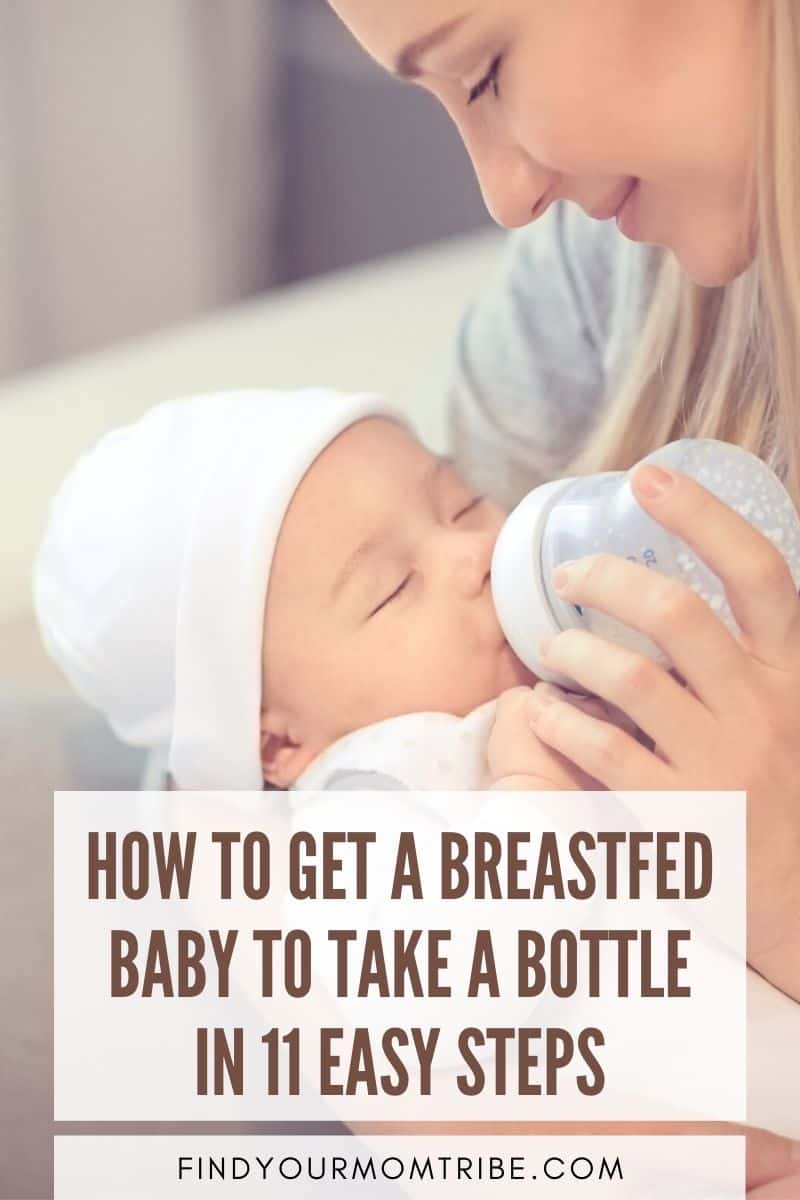
This post contains affiliate links. Please see our full disclosure for more info.

